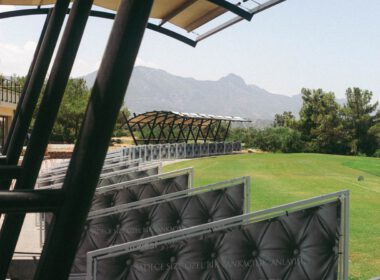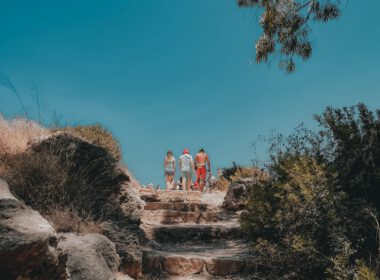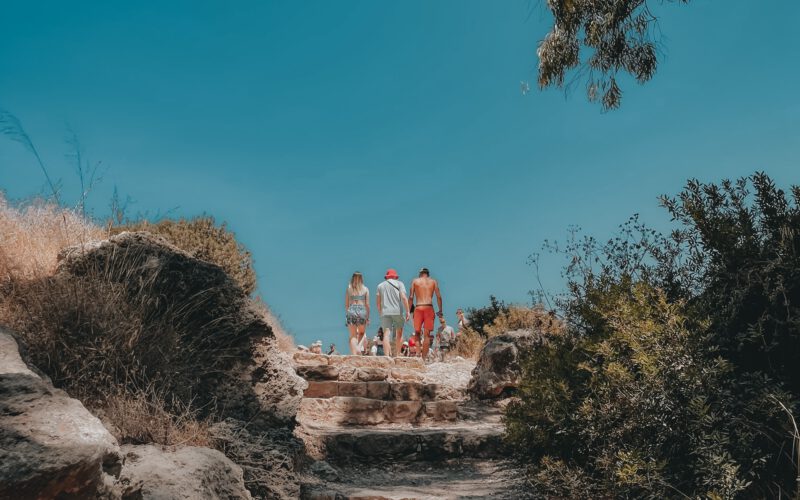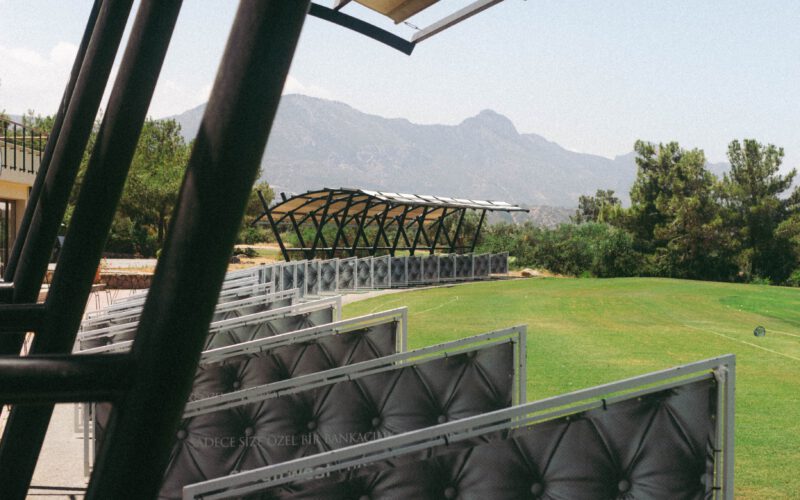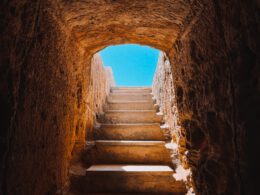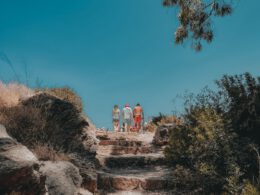Although holiday relaxation reigns supreme here, there is something for both sightseeing enthusiasts and lovers of active recreation. There is no shortage of attractions nearby either.
Once a small fishing village, today it is one of the most popular resorts on the island. Administratively, it belongs to the Famagusta district, which has remained overwhelmingly in Turkish hands since the partition of the country. However, Ayia Napa was fortunate and found itself in a small area annexed to southern Cyprus. This has definitely influenced its popularity and financial outlay.
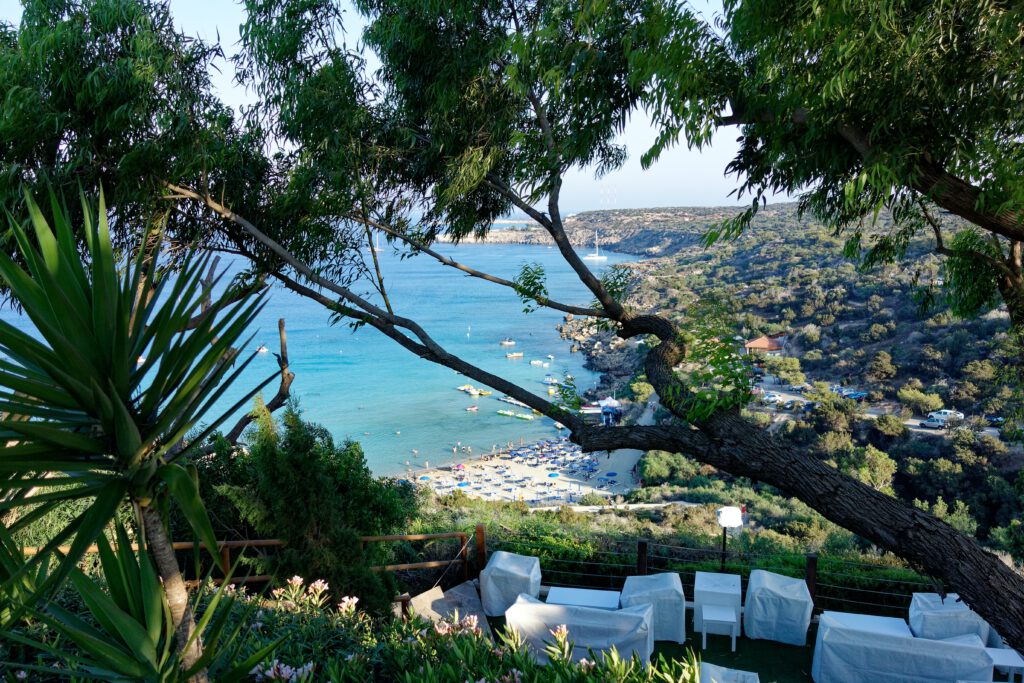
Along the sea
The most famous beach in Ayia Napa is Nissi, a wide, sandy beach with a gentle entrance to the water and a small island nearby. Lots of music, bars and parties on this beach, making it not a place for lovers of tranquility. Fortunately, there are quite a few beaches along the coast, all well-prepared to receive tourists, and not all as party-oriented as Nissi. Worth bragging about, for example, are Glyki Nero, Limnara, Makronisos or Vathia Gonia. Here it is worth recalling that Cypriot beaches in the vast majority have the Blue Flag designation, which confirms good water quality and beach safety.
And since the sea rules here, when you get off the beach you can go to the Thalassa Regional Museum, where there is a 1:1 scale replica of the Greek merchant ship “Keryneia II”, which sank off the coast of Cyprus around 300 BC. The museum also has a separate section dedicated to marine life, with crustaceans, corals, shells and fossils, among other things. If we’re already in town, it’s worth visiting the Ayia Napa Monastery, whose origins are linked to the story of a miraculous icon of the Virgin Mary being found nearby.
Water attractions in this part of Cyprus also include the WaterWorld Themed WaterPark, where mythology meets fun. Award-winning and extremely popular with tourists, it provides a variety of water entertainment.
Kawo Greco
Time for a longer walk. The Kawo Greco Peninsula, also known as Cape Greco, is the southeasternmost part of Cyprus. A true oasis of calm right next to the tourist center of Ayia Napa. The peninsula area is protected as a forest national park, and has also been included in the pan-European Natura 2000 program, which aims to preserve certain types of natural habitats and species considered valuable and endangered. The small peninsula is home to several hundred plant species, including some endemic, not found elsewhere. Kawo Greco is a paradise for birdwatchers. Steep cliffs and picturesque caves attract lovers of scuba diving and jumping into the water from heights. The beauty of this part of the Cypriot coast is best seen from the sea from a ship; cruises are extremely popular here. The peninsula has more than a dozen kilometers of hiking, biking and horseback riding trails.
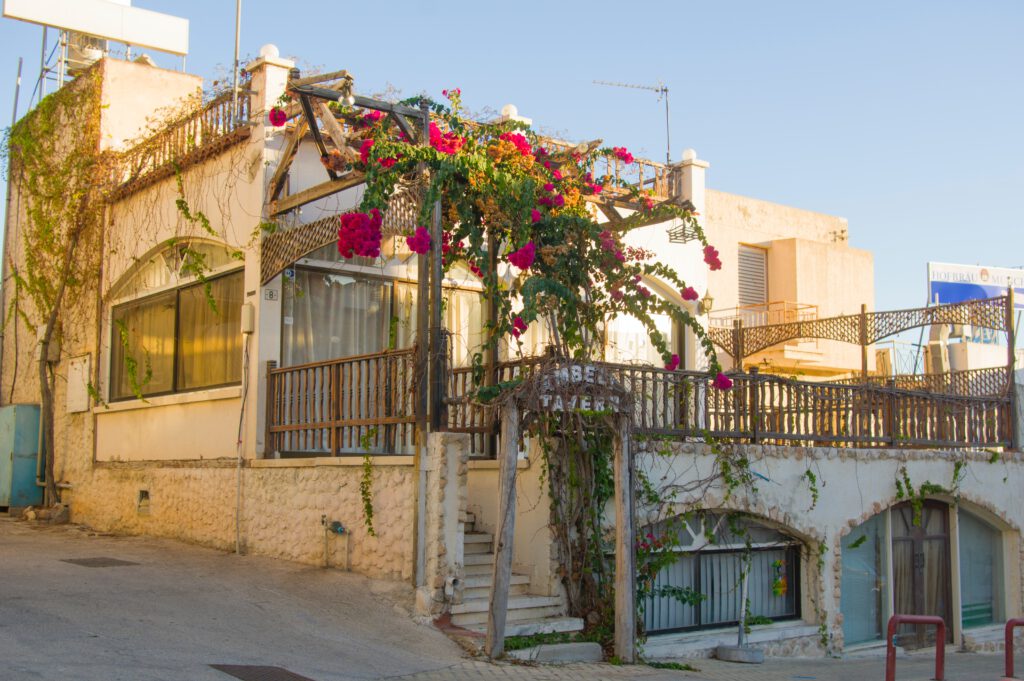
Art at every turn
We remain in a walking mood. A few years ago, the town held a street art festival, during which the walls of some houses were decorated. After that, street art artists returned here and painted more murals. As a result, today Ayia Napa is an open-air gallery, and the paintings refer to the history and modernity of the place, go beyond the accepted conventions, amaze and delight. It’s worth looking around while strolling on your way to the beach or lunch.
Nature and art lovers are sure to enjoy the local sculpture park, which is adjacent to a park of Mediterranean plants, cacti and succulents. In 2014, an international sculpture plein air event was organized in Ayia Napa. After the event, the artists left their works in the open space of the park. Then the next artists came here and history repeated itself. Today there are works by more than 50 artists in the park. The works can be admired against the backdrop of stunning views of the surrounding area, so it’s a double pleasure.
And there’s another sculpture adventure, this time for those who dive or go snorkeling. The MUSAN Underwater Sculpture Museum has been built near the shore, underwater. More than 90 objects by Jason deClaires Taylor have been set up at various depths. It is an underwater forest with trees, plants and human figures. The premise is that over time the sculptures will become part of nature, giving shelter to marine animals, intertwining with the local vegetation. Swimming in this museum is a fairy-tale experience. The author emphasizes that all his works are made in the spirit of eco-art, with environmentally neutral materials.

